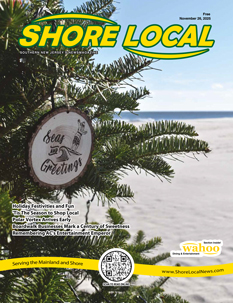Drink Up!
By David Setley
I am a person who genuinely enjoys history. I have always found that researching the origins of a subject is a revealing way to understand the current status of that subject more clearly. Naturally, that led me to wonder … what is the origin of wine? Where did it originate, and how has that impacted the drink that we enjoy today?
The story begins in the Middle East. Archaeologists and historians have estimated the invention of the alcoholic, fermented grape juice beverage that we know as wine to approximately 6000 B.C.E. in the Caucasian Mountains, in the territory now known as the country of Georgia. In archeological terms, that dates wine to the prehistoric period known as the Neolithic Era. This era is also known as the New Stone Age and is considered to be the final cultural and technological period of prehistoric humans.
Humans of this time became focused on domesticated plants and animals, as opposed to hunting and gathering. They also developed tools from the natural resources around them, such as sticks and stones, using processes such as grinding and polishing. Some tools were used to provide their families and communities with needed items, such as woven fabrics and pottery. Culturally, humans were no longer the nomads that dominated the Neolithic Era. They were now living domestic lives. Their time and energy were focused on raising crops and livestock.
Among these crops were cereal grains and grapes. Humans of previous eras are believed to have consumed wild grapes that they gathered. Neolithic humans now cultivated grapes and sought to create more interesting means of consuming them, which led to the idea of fermenting them into beverages that would provide sustenance as well as a medium for cultural and ritual activity. Based on my research, it appears that from the beginning, consuming wine was a cultural activity.
The invention of pottery played into the invention of wine as well. One of the pottery tools created by prehistoric humans was a large vessel called a qvevri. This device preceded oak and steel barrels or vats as the containment vessel used for winemaking. The qvevri was buried in the ground to control the temperature of the wine during fermentation and aging. It was fragments of qvevri with residue of wine tannins on them that led archeologists to their understanding of when and where wine was born.
As far as my research could determine, the Neolithic humans of the Caucasus mountains made wine for personal and communal ritual uses, not a commercial product. That occurred when the Phoenicians and Greeks got involved in the commercial production and trading of wine approximately 2000 years later. The Greeks were passionate consumers of wine and contributed greatly to the many varietals of wine and to the understanding of viticulture techniques. About 1500 years later, the Roman Empire took wine production to much of Europe, making up what is called the “Old World” in wine terms.
Fortunately for wine consumers today, winemakers in Georgia still produce some of the ancient grapes into wine utilizing the same tools and techniques that were used over 8000 years ago. Rkatsiteli is one such white grape. The premiere wine production region of Georgia is called Kakheti. Glekhuri Winery in the Teliani Valley of this region makes a 100% Rkatsiteli wine utilizing the ancient qvevri method. The result is an amber wine, or what has become known more recently as an orange wine. Amber or orange wine is the result of skin contact with the white skins during the fermentation and maceration stages of production. The Glekhuri Rkatsiteli Qvevri is a dry, medium-bodied wine with notes of apricot, peach, orange peel, and honey with a notable minerality resulting from the qvevri contact. This wine pairs nicely with fish, poultry, vegetarian platters, pita with hummus, and hard cheese.
An ancient red grape still in production in Georgia is a rare teinturier grape called Saperavi. Teinturier grapes are red-skinned grapes with red flesh, made interesting because the overwhelming majority of red grapes have white flesh. The 8K Ancient Red is a 100% Saperavi wine produced in the Teliani Valley. The name 8K is to demonstrate the 8000 years of wine production in this region. This smooth, well-balanced red wine is also qvevri-made. The wine is dark red and features flavor notes of blackberries, dark cherries and plums with a very pleasant acidity. A slightly drier, Georgian qvevri-made wine is the Dila-O Saperavi from Teleda Winery. This is an unfiltered, natural wine. Both wines are enjoyable alone or pair well with lamb, beef and pork.
I hope you enjoyed reading about the origin of wine and learning about an ancient winemaking technique that is still in practice today. I encourage you to try one of these wines to get a taste of wine history. If you enjoyed this article, please consider joining me for the Passion Vines World of Wine six-week class that will begin on Jan. 28. You will not only learn about wines from all over the world, but will taste over 70 international and domestic wines as you learn. If interested, visit passionvines.com/events or call me at the Passion Vines store for more information.
As always, if you have questions, contact me at dsetley@passionvines.com or stop by the Somers Point store. Until next time, happy wining!
David Setley is enjoying his retirement from higher education as a wine educator and certified sommelier at Passion Vines in Somers Point, New Jersey.
















